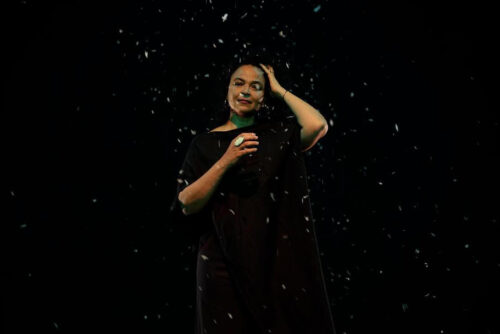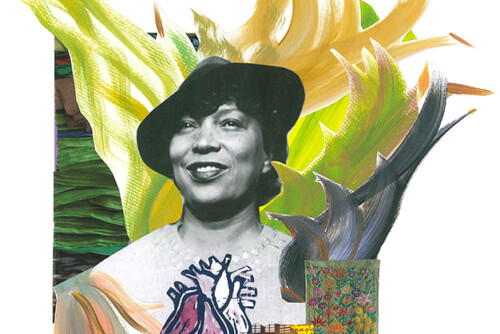The Word “Feminism” and Women’s Sports Advocacy
Today multiple intersections exist between women’s sports advocates, academic feminists, and mainstream organizations that advocate for girls and women. For example, National Girls and Women in Sports Day is celebrated annually both as a lobbying event staged in Washington, DC as well as through regional or campus-based events throughout the United States. Now in its 19th year, this event is jointly organized by several women’s advocacy organizations in the United State, including the American Association of University Women, Girl Scouts of the USA, Girls Incorporated, the National Association for Girls and Women in Sport, National Women’s Law Center, the Women’s Sports Foundation, and the YWCA USA. But if you attend a local National Girls and Women in Sports Day event, replete with speakers, star athletes, and awards, the chances are that you will not hear the words “feminism” or “feminist.” Similarly, for the national event, the web-based promotional narratives for the various sponsors do not refer to feminist agendas explicitly; rather, they describe themselves as “girl-serving” or “women-centered” and espouse increased opportunities for girls to participate in sports and fitness and to engage in healthy lifestyles.
So just what are the contemporary relationships between feminisms and women’s sports advocacy? Feminist movements and feminist scholarship certainly influenced the development of U.S. women’s sports movements. The women’s movement put wind in the sails of women’s sports advocacy. But a lot of women’s sports advocacy remained apart from conscious or overt ties to feminism because, especially for women who worked inside sport, brandishing a feminist label was likely to draw professional fire or evoke misunderstanding. The priority, after all, was giving girls the opportunity to participate in sport because of its myriad benefits to health and emotional development and ability to teach teamwork and other habits to be applied later in life.
There were economic forces operating as well. For example, there was no real government support for women’s sports. The United States was no Canada, Germany, or Russia that invested economic resources in women’s athletics. Likewise, private foundations in the United States had little or no history of giving when it came to women’s athletics. Women’s sports advocates were thus forced to look elsewhere for funding. The Women’s Sports Foundation, founded in 1975 by Billie Jean King, was among the first to glean support from corporate sponsors, taking up the banner to get more girls and women involved with athletic and fitness activities.1 While the corporate sponsors were partly motivated by the cause of women’s sports, the bulk of their sponsorship was about marketing outcomes, sales, and corporate profit. Today “cause-related” marketing in women’s sports may be ebbing and becoming just plain marketing; i.e., companies directly aim to capture the imaginations and dollars of the millions of “active and athletic women” who were previously birthed by women’s sports advocates and feminist movements during the decades following Title IX. Within the current corporate scheme of things, for better and worse, “Nike women” are consumers first and women second.
During the 1990s, Title IX litigations opened more doors for girls and women to enter high school and intercollegiate athletics. Across the nation, parents, coaches, and school administrators who did not have a “feminist” consciousness advocated for athletic opportunities for girls as well as boys. Some administrators pursued a vision of equity or fairness while others were motivated more by the threat of lawsuits, while others simply saw sports as an asset for girls, families, schools, and communities. Sexist myths about girls’ athletic inadequacies bit the cultural dust, and as the number of female athletes mushroomed and efforts to secure gender equity in sport gathered momentum, women’s sports advocacy organizations grew in stature and influence. Ironically, as the century turned, despite its historical origins in feminist movements and ideals, it became less and less culturally fashionable, politically functional, and organizationally viable for women’s sports advocacy to espouse traditional “feminist” rhetoric and labels.
The perceived drawbacks of using overt feminist discourse in women’s sports advocacy circles were evident as early as 1983 during the New Agenda Conference on Women in Sports. Delegates and speakers from around the United States attended the November 3-5, 1983 conference in Washington, DC, which aimed to produce a “blueprint for women’s sports for the 1980s.” The women’s sports advocacy movement was at a tipping point, weak and fledgling but gathering momentum and cultural credibility. Meanwhile, Ronald Reagan was in the White House, and lobbying against Title IX was heavily funded. Women’s athletics suffered mightily from homophobic slurs and strategies that, across the landscape of intercollegiate sport, helped to maintain the male-dominated status quo and to keep women’s quests for equity and advancement in coaching and administration at bay. Women’s sports advocacy organizations were limping along, buoyed up by ideals and ambition, but held back by meager resources. The male-dominated and sexist media regularly ridiculed feminists and their causes, and the threads of patriarchal backlash were being sewn into American culture and politics. Amid this cauldron of events and concerns, and after heated debate among the delegates, it was collectively decided to eschew public use of the words “feminism” and “feminist” because these words could so easily be manipulated and distorted by unsympathetic and sexist male reporters. Similarly, whereas the term “homophobia” was eventually accepted and adopted within the official conference discourse and platform, the word “lesbian” was not.2
Has feminism faded from the vision and practice of women’s sports advocacy? Has the backlash against the women’s movement theorized by Susan Faludi3 forced feminist theory and practice underground in women’s sports circles? Or have women’s politics in the United States become so pluralized and normalized that former distinctions between “women’s organizations” or “feminists” and “nonfeminists” no longer make sense? Have gender politics left the arena of gender and sports?
- The first executive director of the Women’s Sports Foundation, Eva Auchincloss, was not a self-identified feminist when she began to build the organization from scratch. Billie Jean King had enjoined her to create an organization that would help more girls and women to become involved with sports, and she was the right woman for the job. The rationale was that sports were fun, challenging, physically engaging, and produced positive developmental outcomes for girls and women. It was not until later that Auchincloss began to see connections between expanding girls’ athletic opportunities and American women’s political struggles for equal rights in the work place, government, and family. [↩]
- For example, coauthor Don Sabo was interviewed in the mid-1980s by a radio sports talk show host who began with the question: “So is it true that women athletes are a bunch of dykes and why are you on their side?” [↩]
- Susan Faludi, Backlash: The Undeclared War against American Women (New York: Crown Publishers, 1991). [↩]




